Our sixth day was one of the highlights of the entire trip. We visited San Miguel del Bala, an indigenous community in the Amazon rainforest, to learn about their traditional food and farming. I've already written a few diaries about their agriculture. This diary focuses on the community itself and the day we spent with them.
My trip was organized by Global Exchange and Food First. You can find out about future Food Sovereignty tours at the link.
We began our day with San Miguel del Bala EARLY because we wanted to get going before the weather got hot. We met our guide, Don Felsi, at the San Miguel del Bala office downtown Rurrenabaque and then walked together a block or so to the pier. There, we boarded boats and went a short way up the river to the community of San Miguel del Bala, home to 44 families (235 people). In the highlands, the majority of indigenous people speak Aymara or Quechua. Here, the people of San Miguel del Bala speak a language called Tacana.
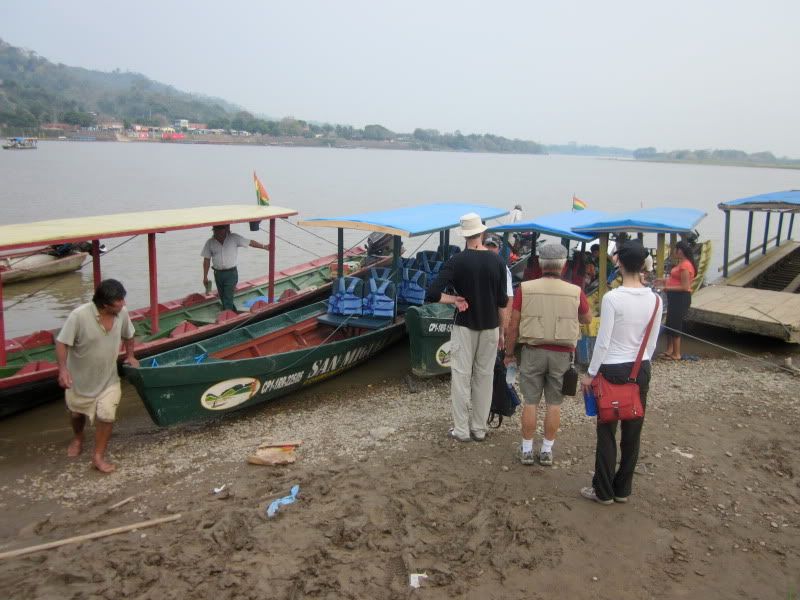
Boarding the boat
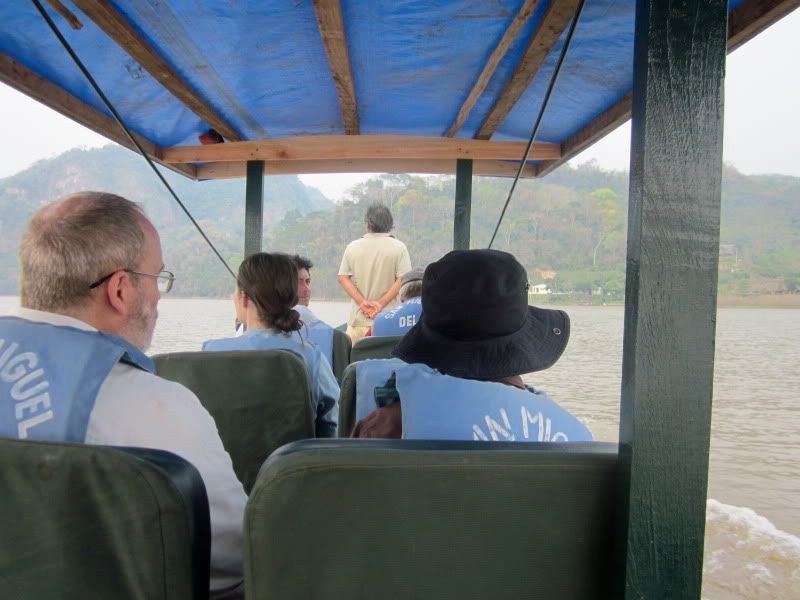
On the boat
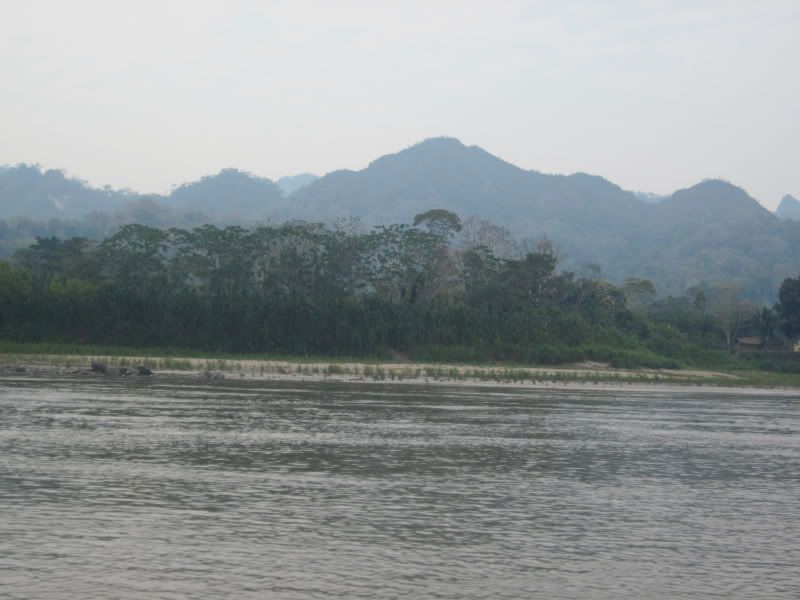
A view of the river
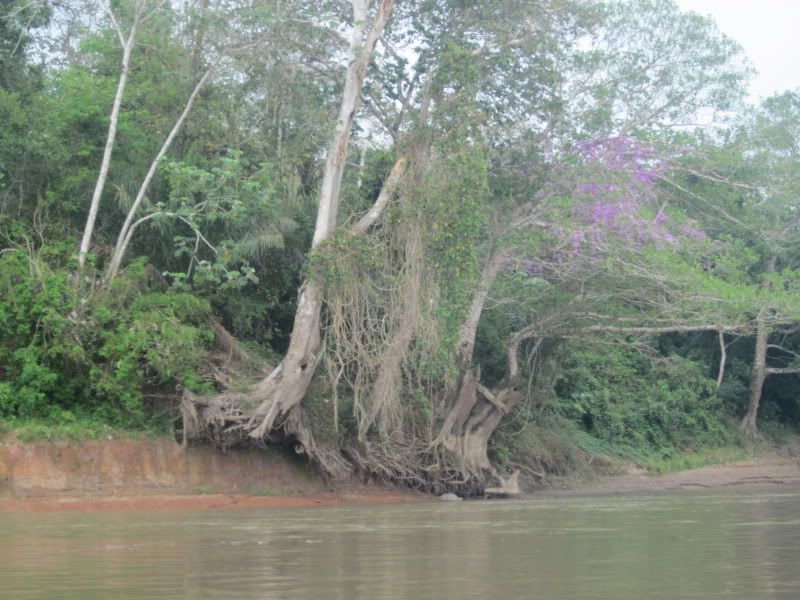
The river
The weather felt cool and breezy on the boat. I focused on the river, looking for wildlife. There were vultures at the pier, hardly the type of exotic animals I was hoping to see in the rainforest. Someone pointed out an egret as we went along. But what about crocodiles or tapirs? How about toucans, or macaws? Or New World Monkeys that can swing by their tails (Old World Monkeys can't do this)? And how about pink dolphins? I had even gone to the trouble of learning how to say these animals' names in Spanish!
I'll save you the suspense: I saw nothing. Almost. During the trip, I did see a few species worth noting, but I saw none on this day. In addition to the vultures and egrets, we saw a cormorant and a few turtles. And BUGS BUGS and MORE BUGS. The bugs in the rainforest are HUGE. (This is not always a bad thing - as big and mean as the creepy crawlies are, the butterflies are equally spectacular.)
As it turned out, the crocodiles are mostly hunted out of this part of the river, and tapirs - I am told - are delicious, so you will hardly find them anywhere where there are people. Pink dolphins just don't happen to live in this part of the river. Big cats like jaguars are experts at hiding, so I didn't expect to see any of them. Who knows where all of the rest of the animals were hiding. The only good thing I can say about this is that it is evidence that San Miguel del Bala is a responsible tour operator, that they aren't treating the wildlife like zoo animals, stressing them out and displaying them to the tourists in ways that harm them.
After a short trip, we came to San Miguel del Bala's Eco-Lodge. There are three main buildings: a dining hall and kitchen, bathrooms, and a "Big Cabin" (Casa Grande). From the river, all you can see is the Casa Grande, but then everything becomes visible as you make the short hike up some stairs to the Eco-Lodge. The buildings were made with local, sustainable materials and they are each gorgeous and quite modern. I found out from the group's website that their Eco-Lodge facilities were made with $150,000 in donations from NGOs plus $35,000 in their own labor. Away from this main area there are several cabins where guests can sleep if they are staying for more than one day.
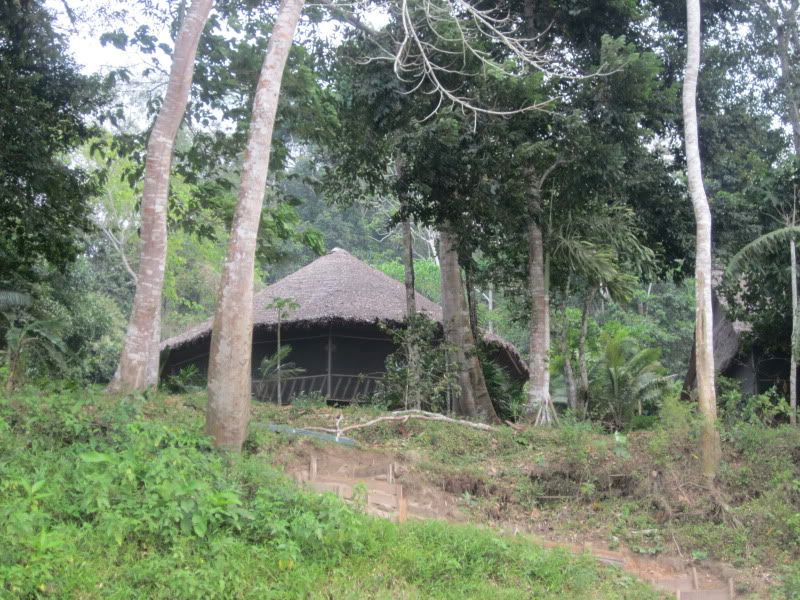
The Casa Grande
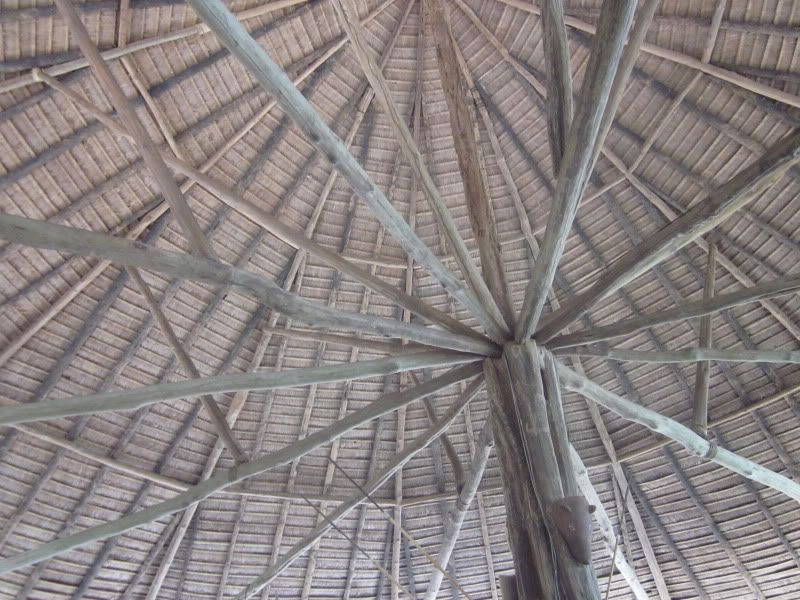
Ceiling of the Casa Grande

A display of traditional bows and arrows in the Casa Grande
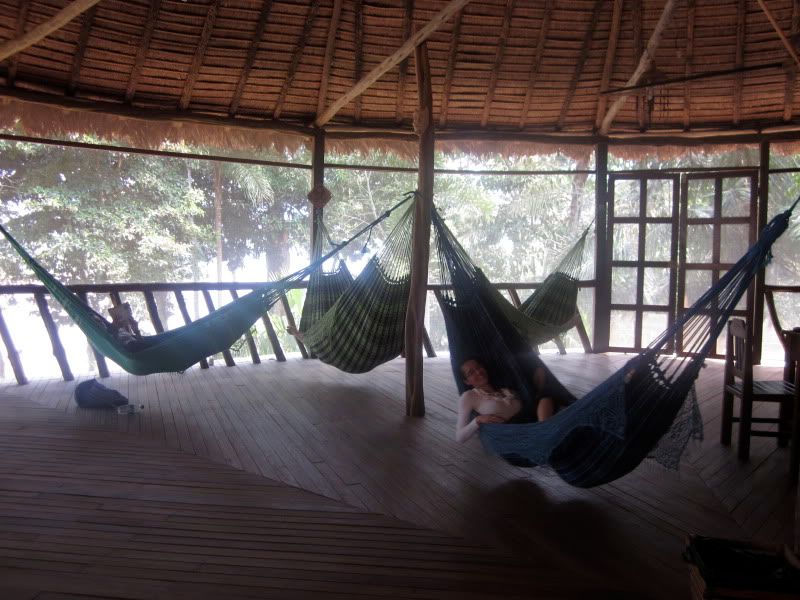
Hammocks in the Casa Grande
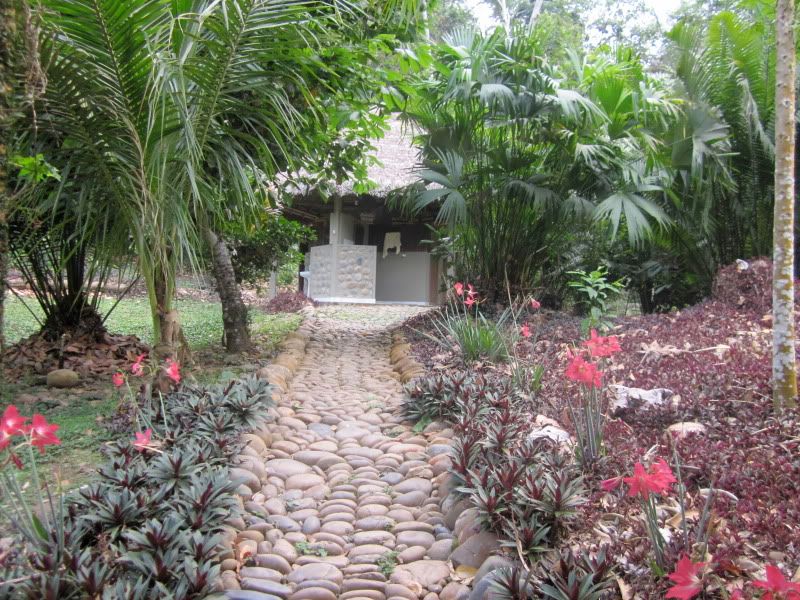
The beautifully paved path to the bathrooms. At the top are real bathrooms, not a hole in the ground!

The dining hall
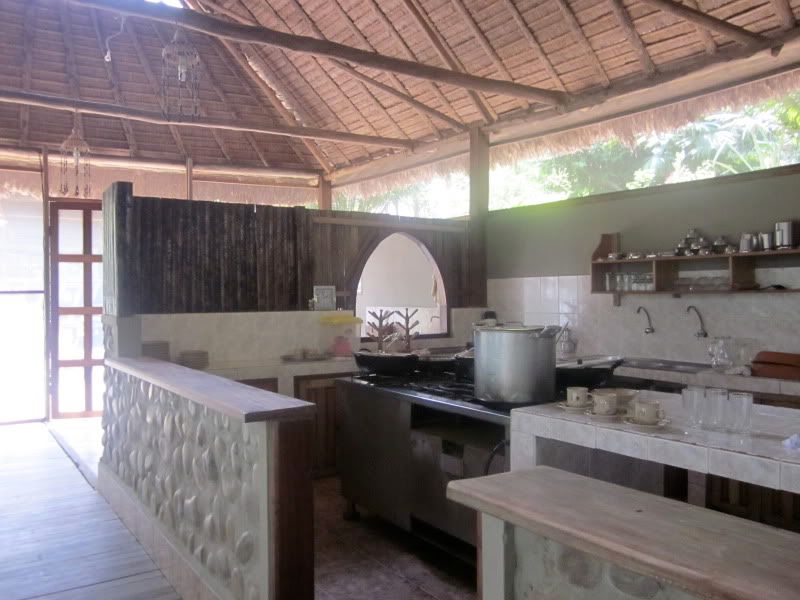
The kitchen
We started our day with a workout - a steep climb up a number of stairs. Thank goodness that a) it wasn't terribly hot out yet and b) we only about 300m above sea level.
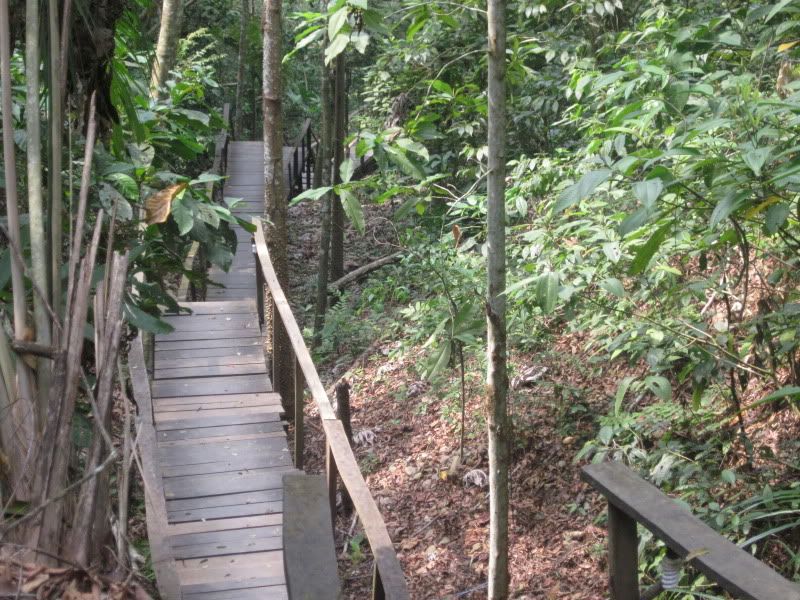
A look down at the infamous steps
Once we got to the top, our tour actually began. We walked along paths, learning about the community's agriculture and about the plants of the forest as we went. As it turns out, it's not just the animals in the rainforest that can get you... some of the plants are pretty mean too. I didn't get pictures of the spiky palm trees or the little leafy plant with the bumps on it that is "the rainforest version of Poison Ivy," but check this out:
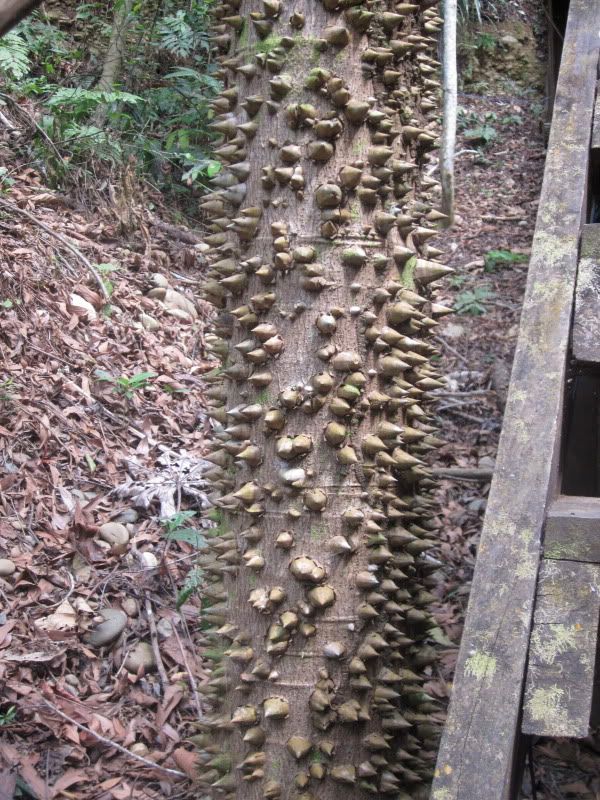
This tree is telling you: "Don't F* with Me!"
Another interesting plant we saw was the "Walking Palm." When the availability of light changes, this plant puts down new roots and actually MOVES to wherever there is light.
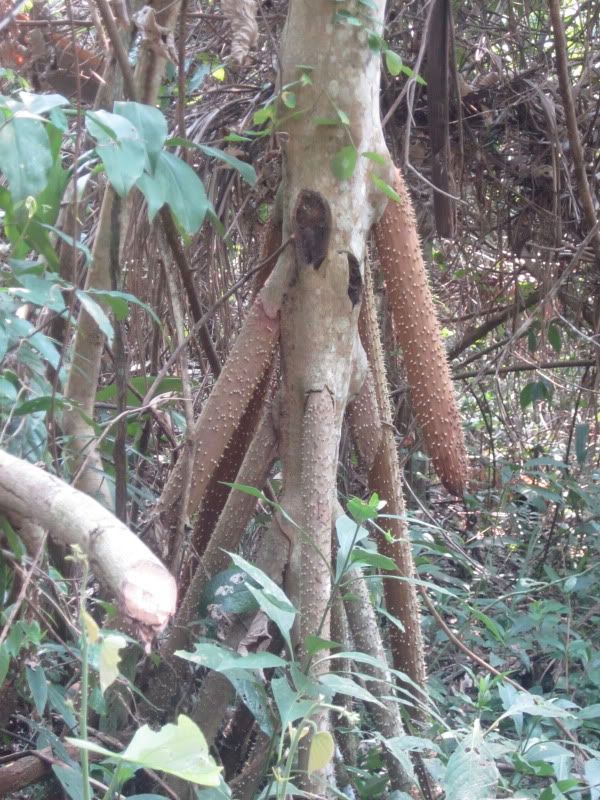
A walking palm
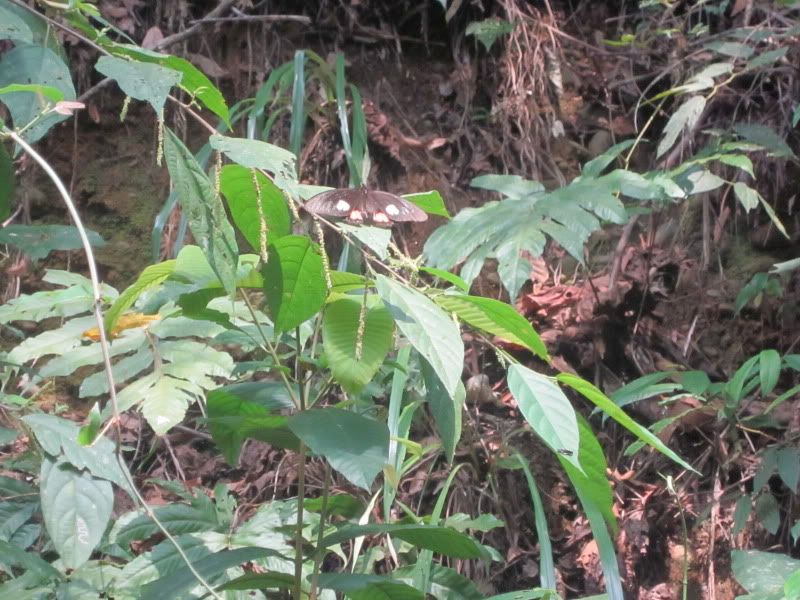
A butterfly we saw
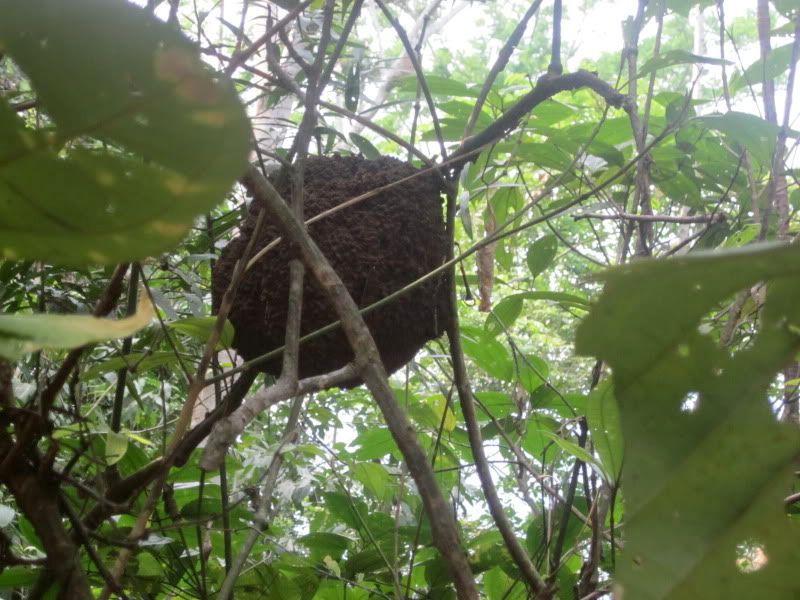
A termite nest
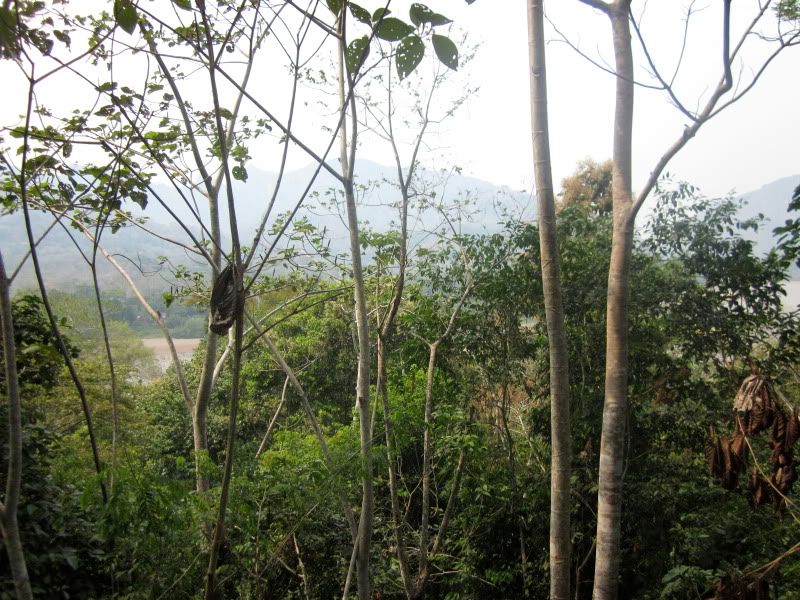
A nice view from the path
After a short walk, we came to the community, located along the river, in an area with relatively good soil. The buildings and facilities in the community itself are not as ritzy as the ones that make up the Eco-Lodge. Still, I found the homes to be quite beautiful, the people were friendly and welcoming, and oh my god did they have cute kids. And everywhere you looked, there were fruit trees.
Our guide, Don Felsi, introduced us to his wife and a few of his four young children. The homes, as you will see, are made from local, sustainable materials, probably due to necessity more than out of concern for the environment. The only two buildings made of outside building materials like bricks were the church and the school.
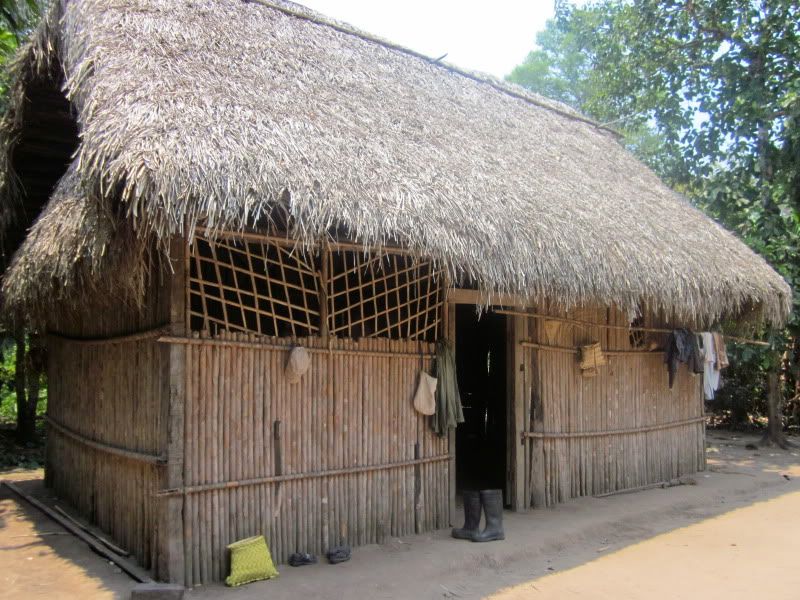
A home in San Miguel del Bala
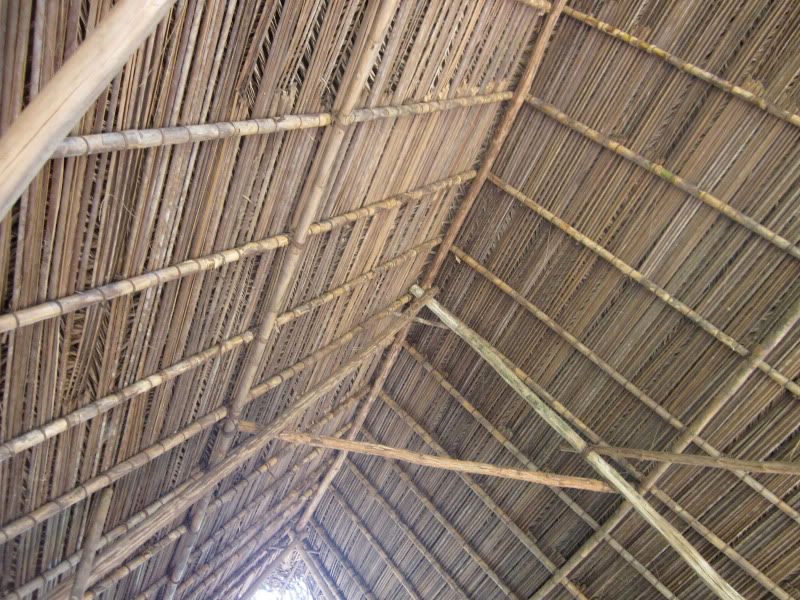
The thatched roof of a home

Another building - probably someone's home
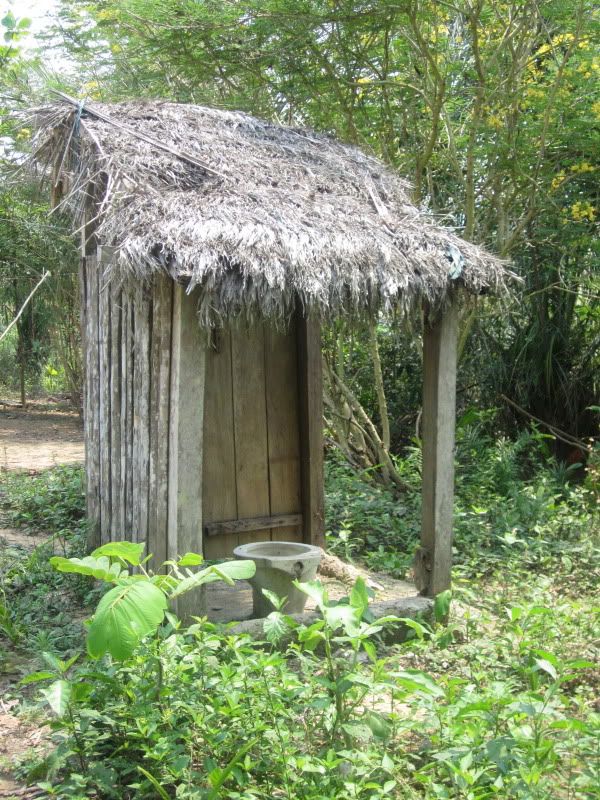
The bathroom facilities in the community... not as nice as those of the Eco-Lodge.
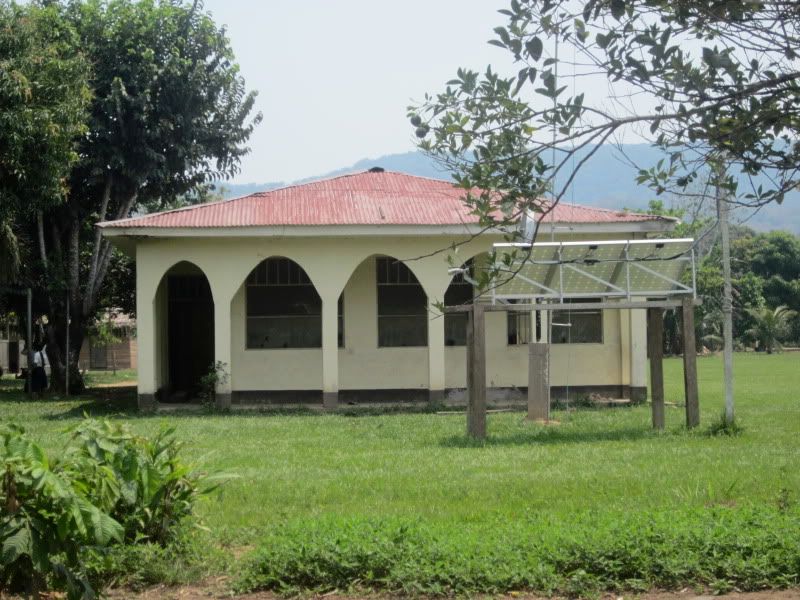
A building with solar power. I am pretty sure this is the school.
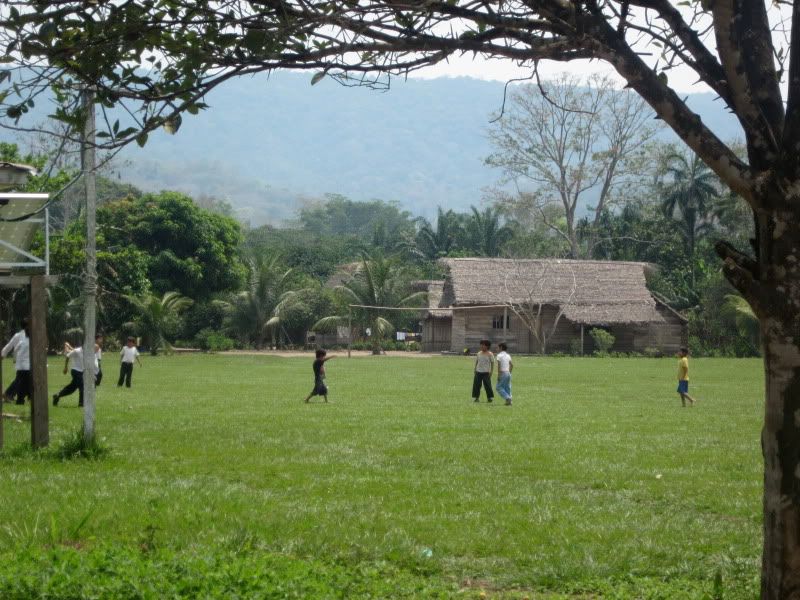
No community's complete without a soccer field, right?
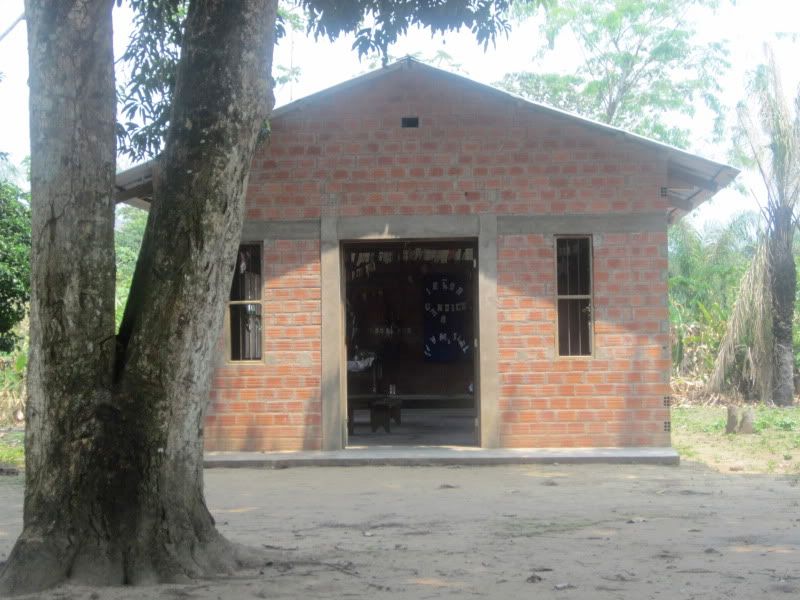
The church.
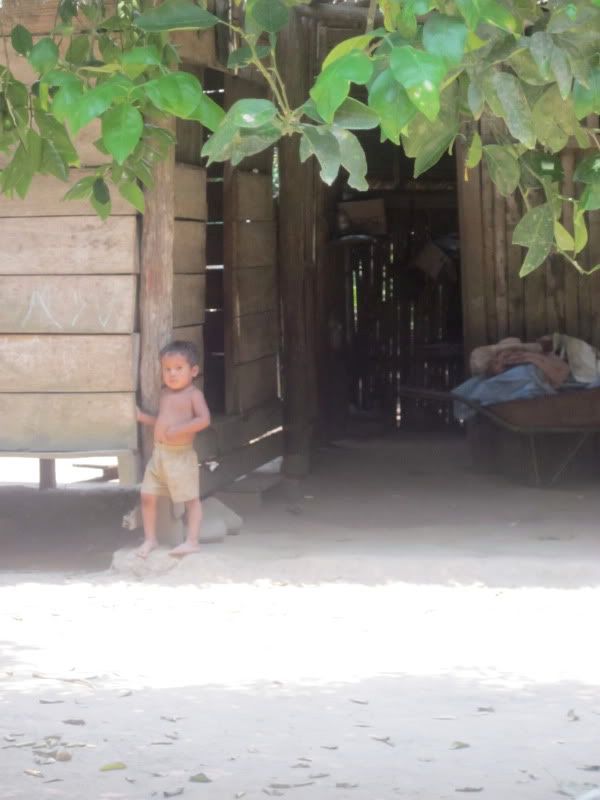
Sooo cute
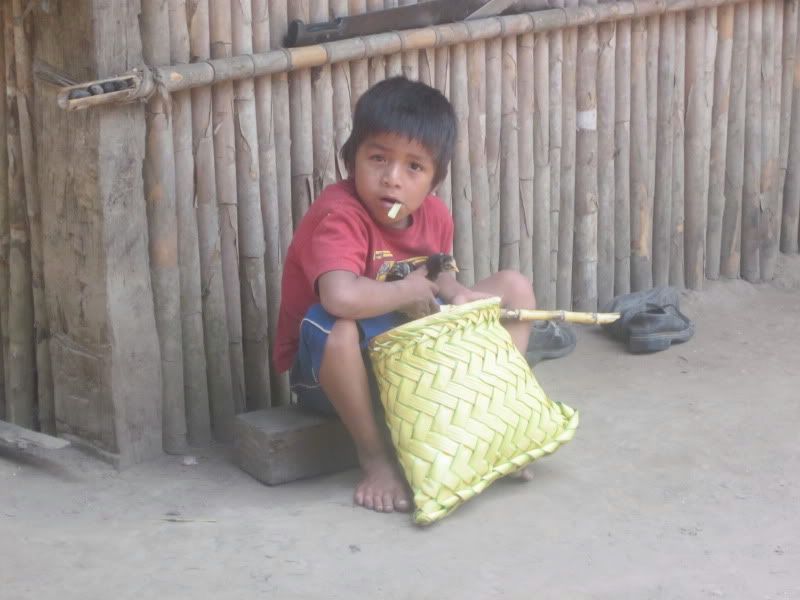
This guy was my favorite. He's chewing on sugarcane and holding a baby chick.

Awww.
As you can see from the photo above, they have a church. We asked and our guide told us that the community is Catholic. However, we asked about their tradition of coca chewing and he told us that prior to chewing coca, they make an offering to Pachamama (Mother Earth in indigenous religions) and then make the sign of the cross.
His home, which I don't have a picture of here, looked pretty similar to the other homes in the pictures above. He had a small building behind his home that is mostly open, covered just in chicken wire, where he had his homemade chicha (a local alcoholic drink) and where his ducks were living. He told us that since he's become a tour guide, he no longer has to farm.
To kill time before lunch, they had an elderly woman sit before us and make a fan from a palm frond. Once it was done, they gave it to us. Daniel assured us that the woman who made the fan would be compensated for her work.
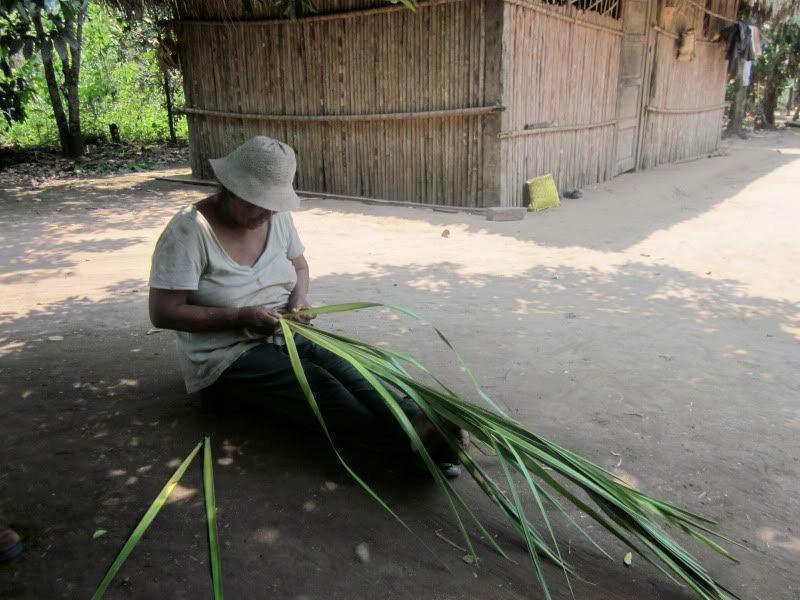
Making a fan
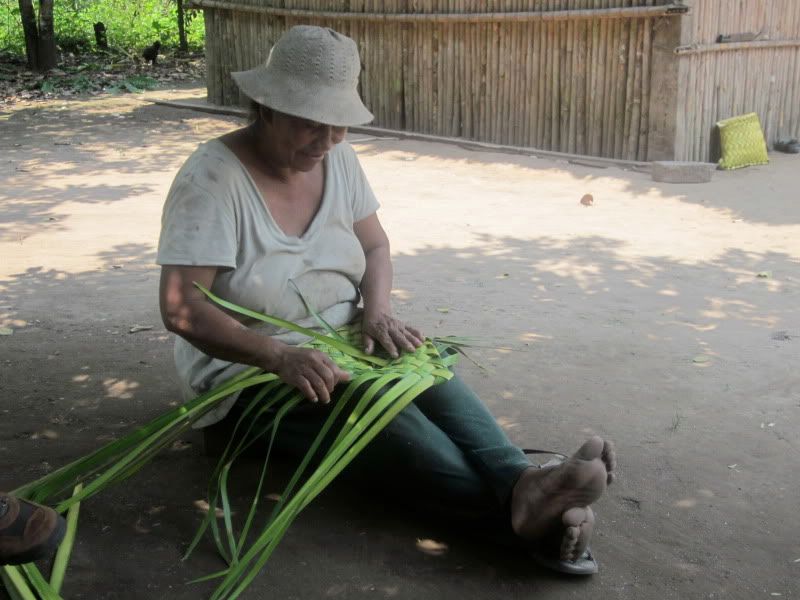
It's almost done!
Then, they led us down to the river, where a boat met us and took us to lunch. By this time of the day, the weather was HOT. Hot and miserable. And the more clothes one wore, the more miserable it was. I had taken the perhaps stupid precaution of covering myself from head to toe in hiking boots, socks, and an ugly but lightweight outfit from REI consisting of pants and a long sleeve shirt. My clothes certainly did not prevent mosquito bites, and there wasn't any real risk of sunburn, so honestly, I think I was probably miserable for nothing. During lunch, I zipped off the bottom of my pants and unbuttoned my shirt, leaving one button fastened to sort-of cover the sports bra underneath. Next time, I am wearing shorts, a tank top, and mosquito repellent.
Lunch was incredible. They told us they were sharing their traditional foods, but I have a hunch that some of the foods were more traditional than others. To drink, they offered orange juice, pineapple juice, chicha made from corn, and cupuaçu (a tropical fruit) juice, as well as coffee, tea, and water. The food consisted of several salads, fried plantains, and a few kinds of meats. The star of the show was the fish, catfish caught in the river that was cooked in either leaves or in bamboo.
They served me the traditional Bolivian "vegetarian tourist consolation prize" of a vegetable omelet, which I gave away to someone who wanted it. Then I helped myself to some fish, which was delicious. I am all for being a vegetarian 99% of the time, but in a foreign country when the traditional food is a sustainably produced meat, I want to try it. They also served a soup and, while I can't remember what kind it was, I remember it was delicious.
For dessert, I think they gave us papaya. This became a running joke on the trip because I do not like papaya and it must have been papaya season in Bolivia. They served it to us everywhere we went. I always gave mine to another traveler in our group.
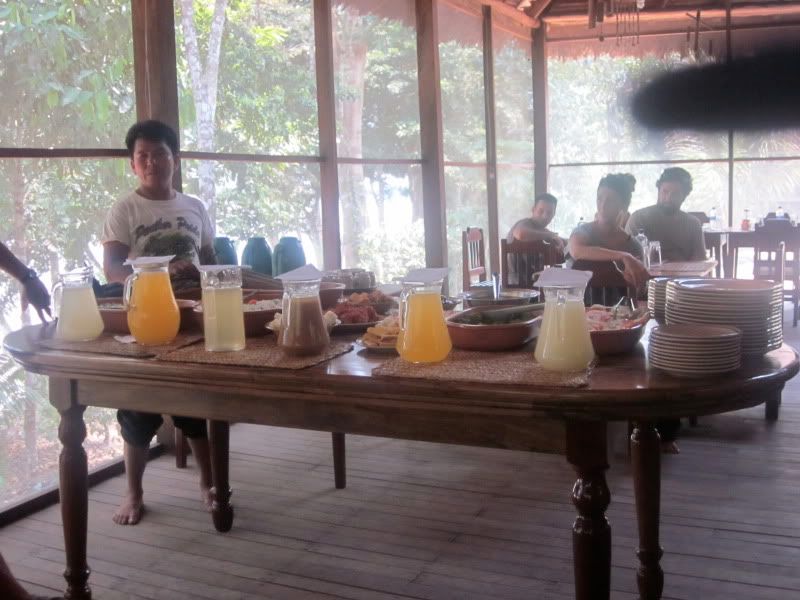
Lunch

Fish cooked in leaves
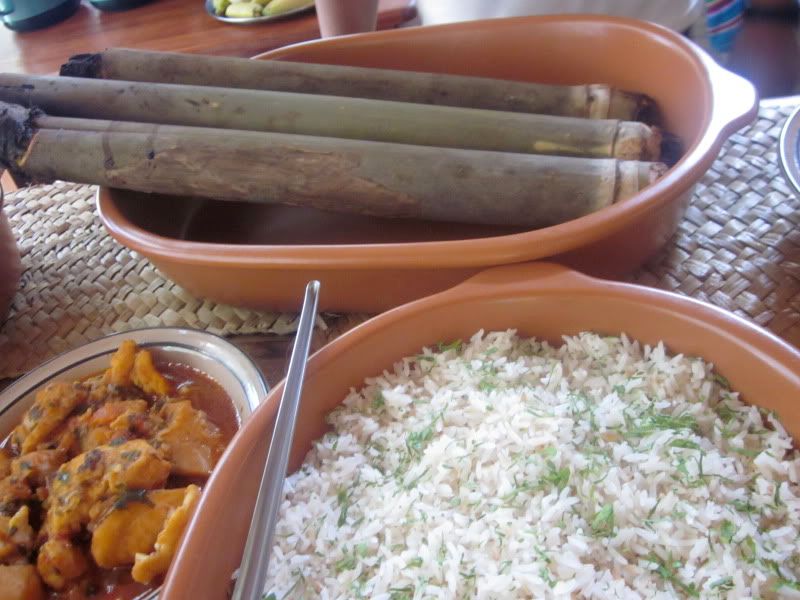
Fish cooked in bamboo

Papaya salad
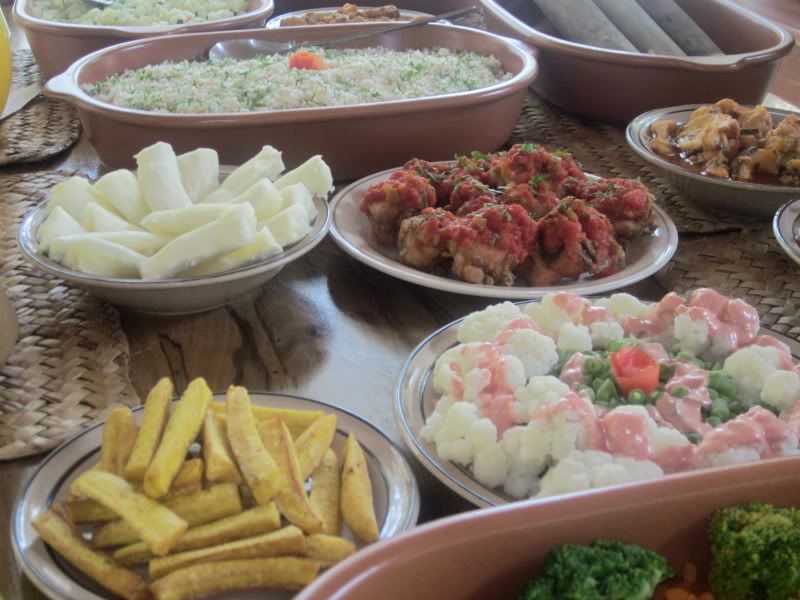
Fried plantain, cassava, and some meat thing covered in tomato sauce
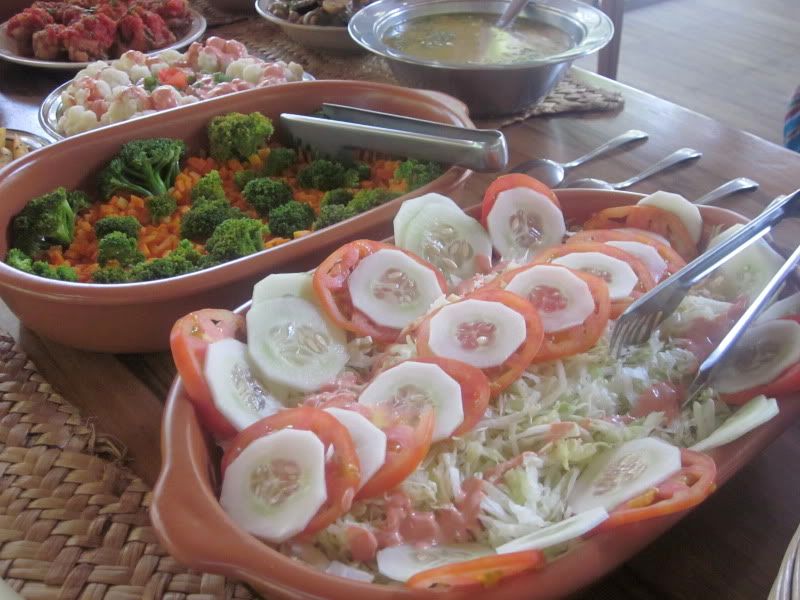
Salad
After lunch, we spent a bit of time in the Casa Grande, laying in the hammocks and reading the various signs that told the story of the community's history and culture.
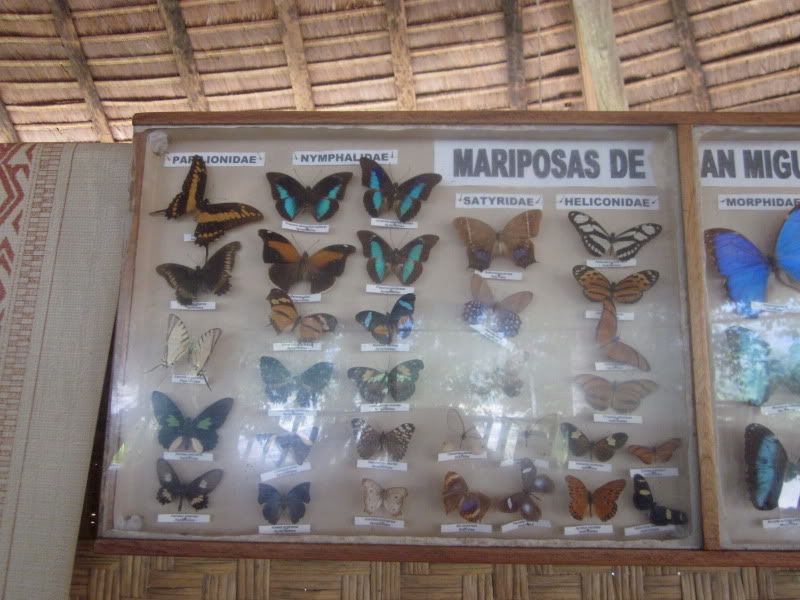
A poster of local butterflies in the Casa Grande. Check out the big blue ones - we saw several of those but I couldn't catch them with my camera.
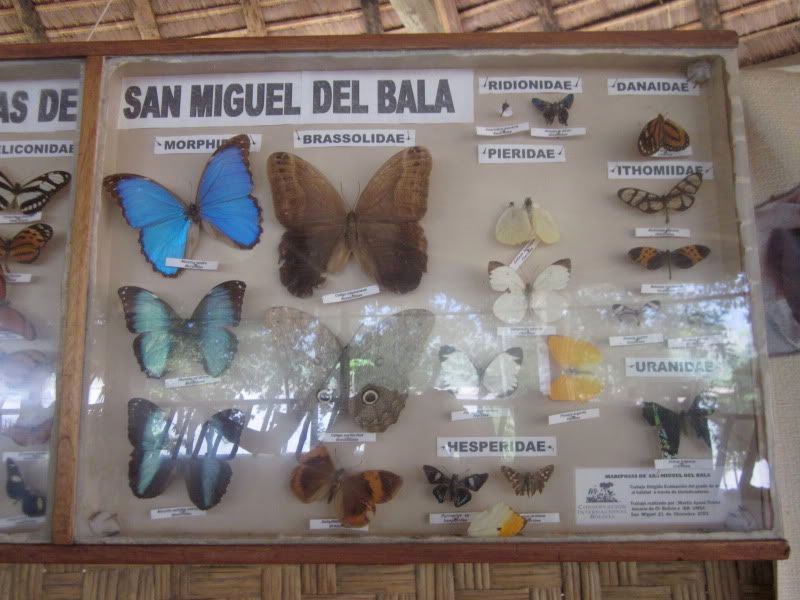
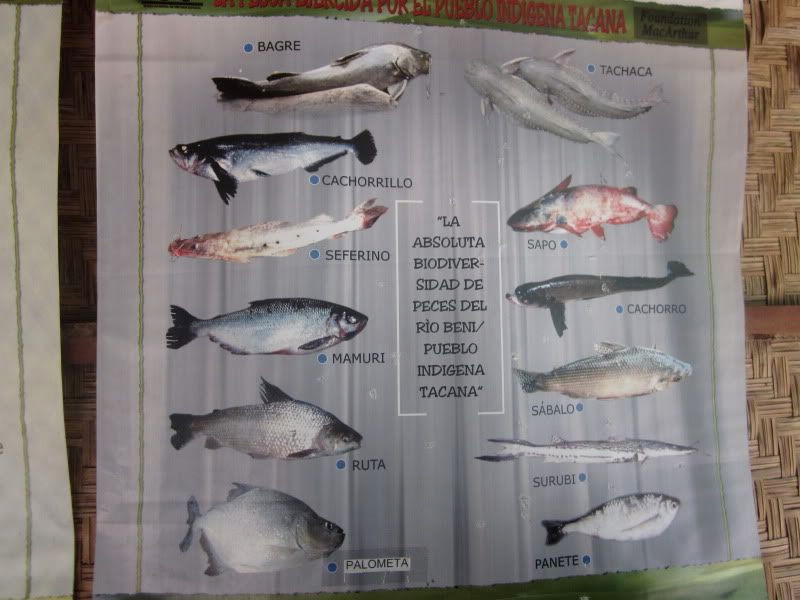
A poster showing the fish they catch on the river
At some point, they told us we had several options for the afternoon. For most of us, any option that involved going back up the steps was out of the question. I would have enjoyed the tour of their traditional medicinal plants, but there was no way I was going back up the steps. Not in the outfit I was wearing, and not in that heat. Plan B was to kill time with a boat ride, and that's what most of us did.
On the boat ride, we saw children swimming, a few turtles, and a cormorant. Daniel pointed out various rock formations along the river. At one point, we stopped and got out of the boat to see ancient stone carvings. Then we went back to the Eco-Lodge to pick up our two group members who had spent their afternoon learning about medicinal plants, and, with them in the boat, we went back to Rurrenabaque.
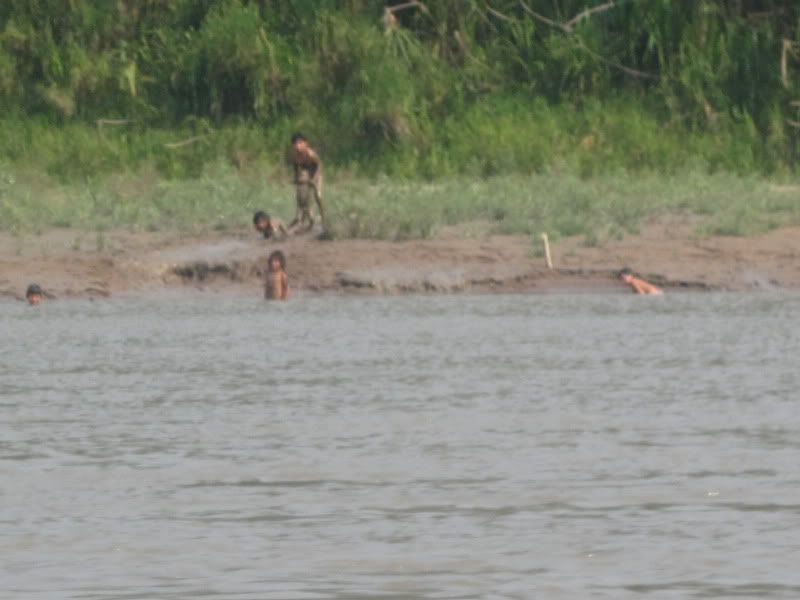
Swimming on a hot day. I would too if I could.

Ancient stone carving. There are over 100 of these that have been found along the river.
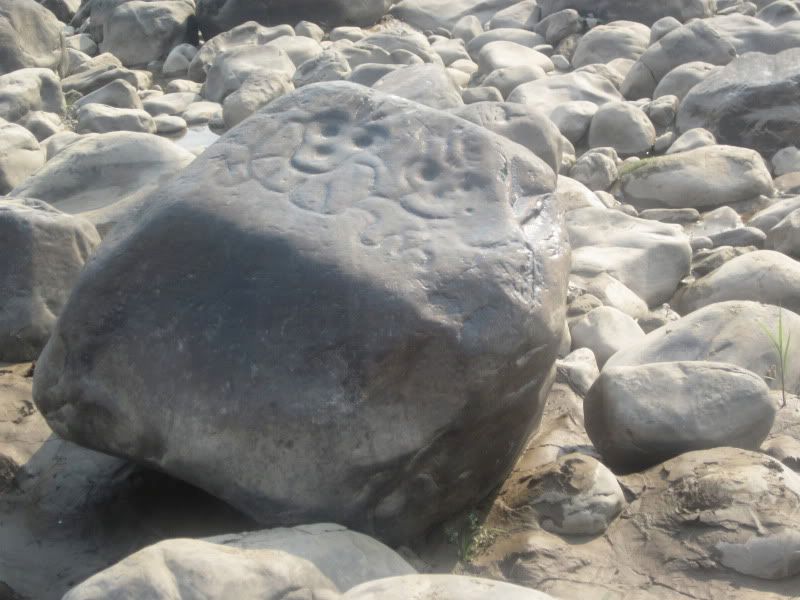
A stone carving of two monkeys, or perhaps it's two skulls
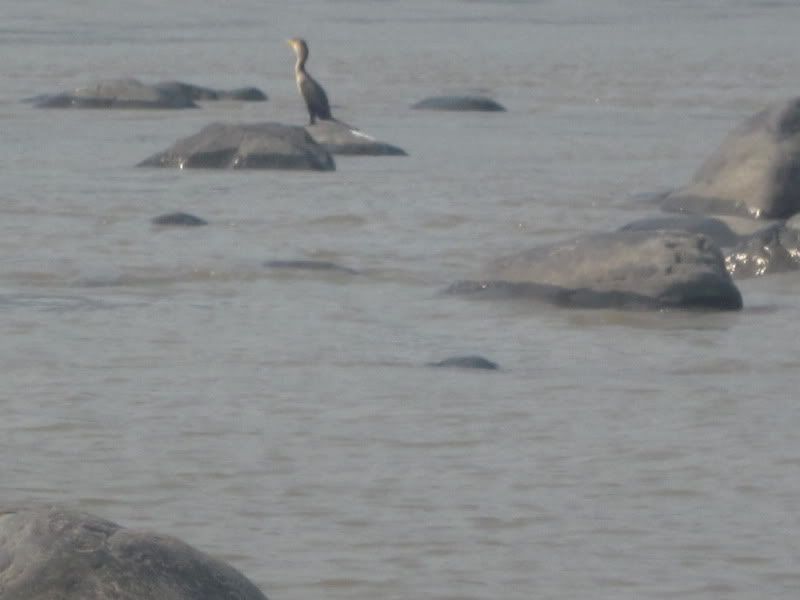
A cormorant
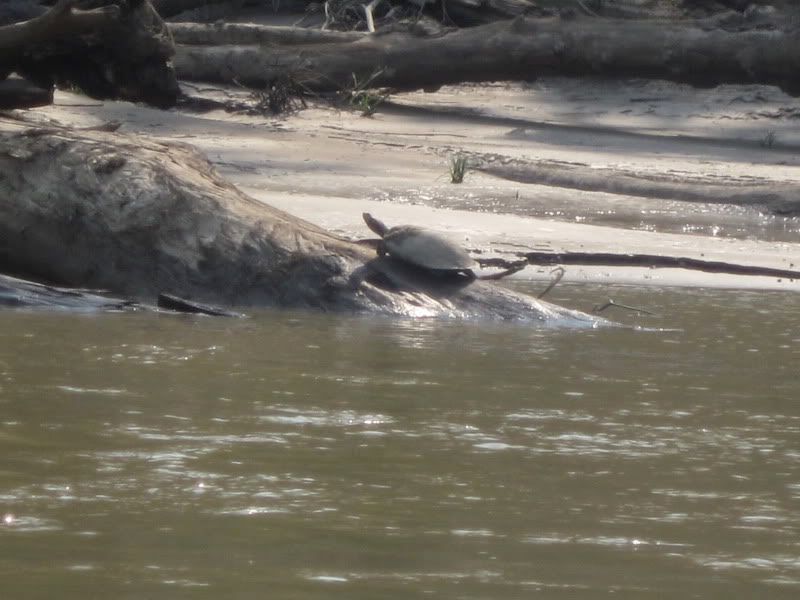
A turtle
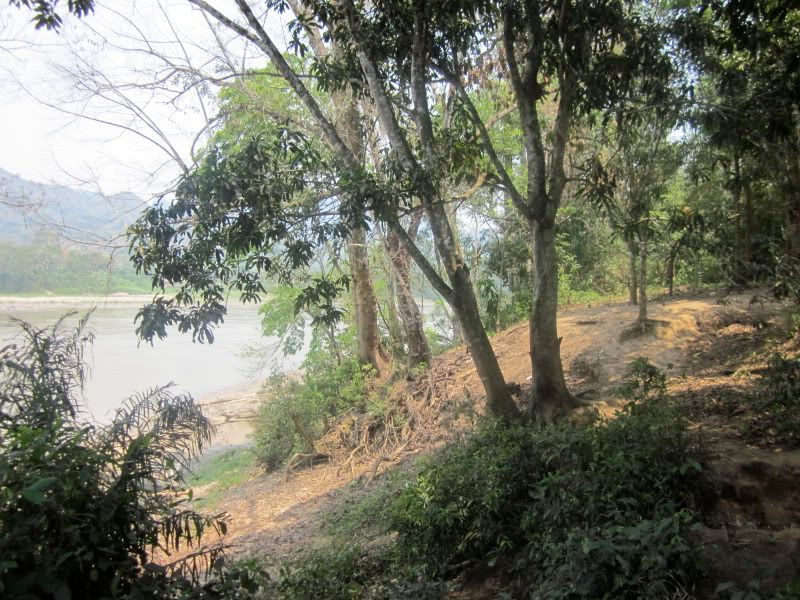
A nice view of the river bank
On the way back, we passed an enormous resort, right on the river. We were told that an Israeli developer had built this eyesore and now he was advertising it with the obnoxious and hypocritical slogan "Be one with nature!" (Rurrenabaque gets a LOT of Israeli tourists.)
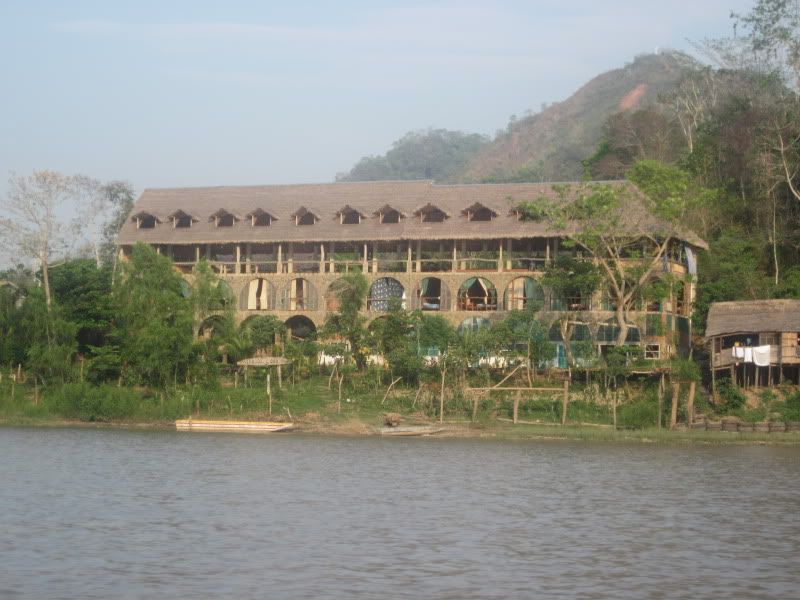
Israeli eyesore of a resort
As our boat arrived at the dock in Rurrenabaque, a raft with huge logging trucks floated past us. At one point, Daniel polled several men from San Miguel del Bala, asking how many of them were illegal loggers before starting the eco-tourism business. All of them. Then he asked one man how long he had worked in logging. Ten years. I've never before thought I was doing anything good for the environment by traveling, but in this case, supporting San Miguel del Bala with your business means providing them with meaningful jobs and income in a way that makes the rainforest plants and animals more valuable alive than dead.
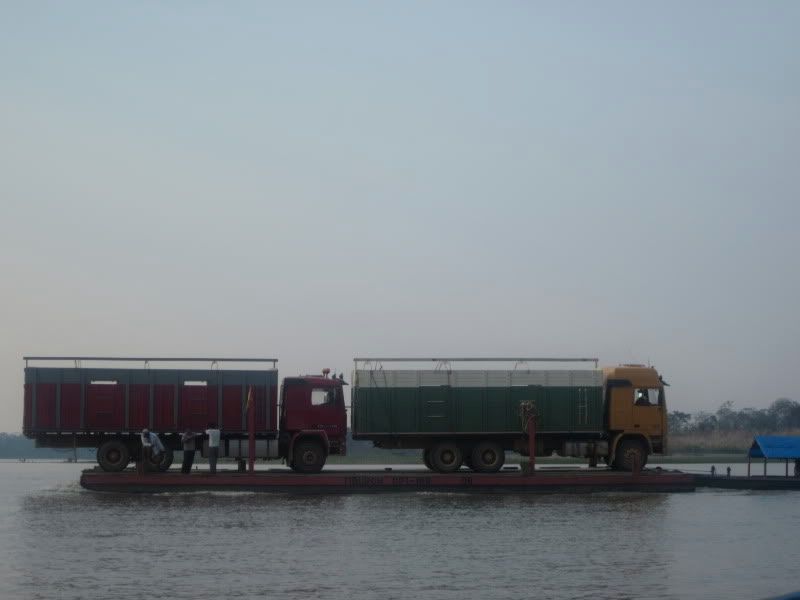
Logging trucks.
No comments:
Post a Comment